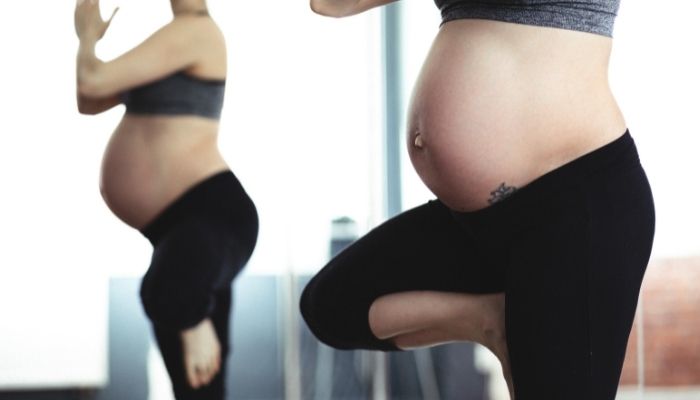Manisha (30-years-old) works in an IT company in Bangalore. Just a few weeks back, Manisha got the most exhilarating news of her life that she was expecting. Manisha was super excited with the news as it brought a new smile along with responsibilities in her life. Manisha is very careful about her food habits and eats only wholesome and nutritious foods. Since Manisha is healthy and doesn’t have any other health complications, hence her gynecologist recommended some exercises for pregnant women.
Regular exercise in pregnancy will improve your posture and decrease some common discomforts like backache and fatigue. If you followed a physically active life before your pregnancy, then you can continue your exercises in moderation. Don't do much experiment with your exercises; rather do the exercises that are the most comfortable for you now.
Why is Physical Activity Important for you During Pregnancy?
Physical exercises are beneficial for healthy pregnant women. Pregnancy exercises third trimester and other trimesters will help women to stay healthy during their pregnancy period.- Exercises make your mind and body healthy and rejuvenated. Physical activities will improve your energy level
- These activities improve your heart, lungs, and blood vessels
- Help you to maintain your weight during your pregnancy phase
- Help you to get rid of some discomforts of pregnancy like constipation, back pain, inflammation in your legs, ankles, and feet
- Manage your stress and improve your sleep
- Help you in minimizing your pregnancy complications, such as gestational diabetes and preeclampsia
- Gestational diabetes is a type of diabetes that particularly occurs in pregnancy. This diabetes happens when your body has excess sugar (called glucose) in the blood.
- Preeclampsia is a type of high blood pressure that hits some women after the 20th week of pregnancy. These conditions may make you more susceptible to pregnancy complications such as premature birth (birth before 37 weeks of pregnancy).
- Minimize the risk of having a cesarean birth. Cesarean birth is a type of surgery in which your baby is born through a cut in your belly and uterus. This surgery is performed only by professional surgeons who have plenty of experience in this field
- Prepare you physically for labor and birth. Some physical activities like prenatal yoga, Pilates, Kegel exercise for pregnant women, meditation, breathing exercises, and other calming methods are useful in managing your labor pain. Regular exercise improves your strength and stamina to get through labor
Who Should Not Perform Exercises in Pregnancy?
Women who are suffering from diabetes, asthma, and heart disease may stay away from exercise. Exercise could be life-threatening for you if you have a pregnancy-related condition such as:- Bleeding or spotting
- Low placenta
- Repeated or recurrent miscarriage
- Previous premature births
- History of early labor
- Weak cervix
6 Best Exercises for Pregnant Women
Here are the 6 best physical activities/exercises which are safe during pregnancy as mentioned below:-- Walking: Brisk walking is a wandering workout in your pregnancy. This physical activity doesn’t strain your joints and muscles. If you are doing exercise for the first time, then this is a great activity.
- Swimming and Water Workouts: The water activities will support the weight of your growing baby. Your heart rate will improve once you go against the water. This is also beneficial for your joints and muscles. If you have low back pain in your pregnancy while doing other activities, then perform swimming.
- Riding a Stationary Bike: This is much safer in pregnancy than riding a regular bicycle. You may fall less likely from a stationary bike than a regular bike.
- Yoga and Pilates Classes: Inform your yoga teacher that you are pregnant before starting anything. The instructor will not give you poses that are unsafe for pregnant women (such as lying on your belly or flat on your back (after the first trimester)). Nowadays, many yoga centers and community hubs offer prenatal yoga and Pilate classes to motivate pregnant women to stay healthy in their pregnancy.
- Low-Impact Aerobics Classes: Go for low-impact exercises where you need to keep one foot on the ground or equipment. Examples of low-impact aerobics include walking, riding a stationary bike, and using an elliptical machine. You don’t need to put more strain and stress on your body while performing these exercises than high-impact aerobics. In high-impact aerobic exercises, both of your feet are on the ground at the same time. Some examples of high-impact exercises are running, jumping rope, and jumping jacks. Once your instructor knows your pregnancy, he/she will alter your workout, if required.
- Strength Training: Strength training builds your muscle and strengthens your bones. You can work out with weights if they are not too heavy. But ask your trainer regarding how much you can lift in your pregnancy.
What Exercises are Banned in Pregnancy?
- Avoid those activities that need jerking and bouncing movements as you may fall. Don’t perform activities like horseback riding, downhill skiing, off-road cycling, gymnastics, or skating.
- Any activities where you may hit your bellies, such as ice hockey, boxing, soccer, or basketball
- Activities where you need to lie down on your back (after the first trimester), like sit-ups
- Activities where you need to hit the water with great force (water skiing, surfing, or diving)
- Skydiving or scuba diving as you may suffer from decompression sickness
- Don’t perform any exercise at a high altitude (more than 6,000 feet), unless you stay at a high altitude
- Activities that will enhance your body temperature, like Bikram yoga or exercising on hot, humid days





